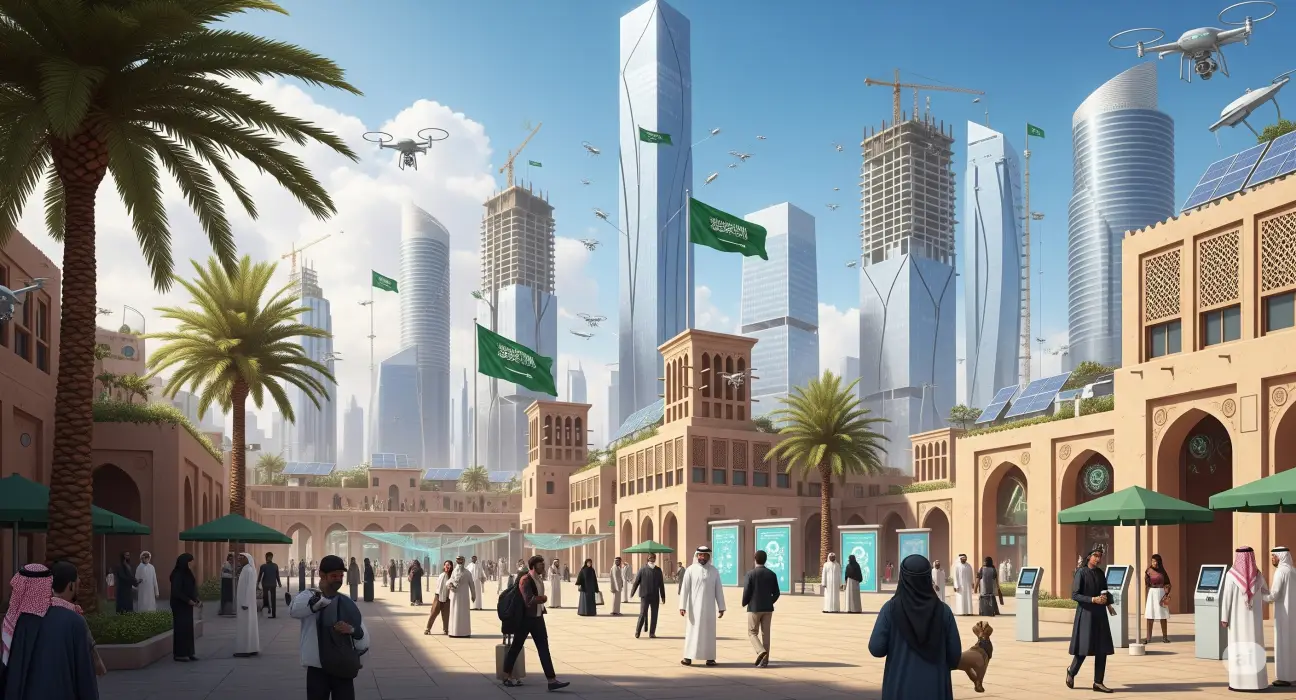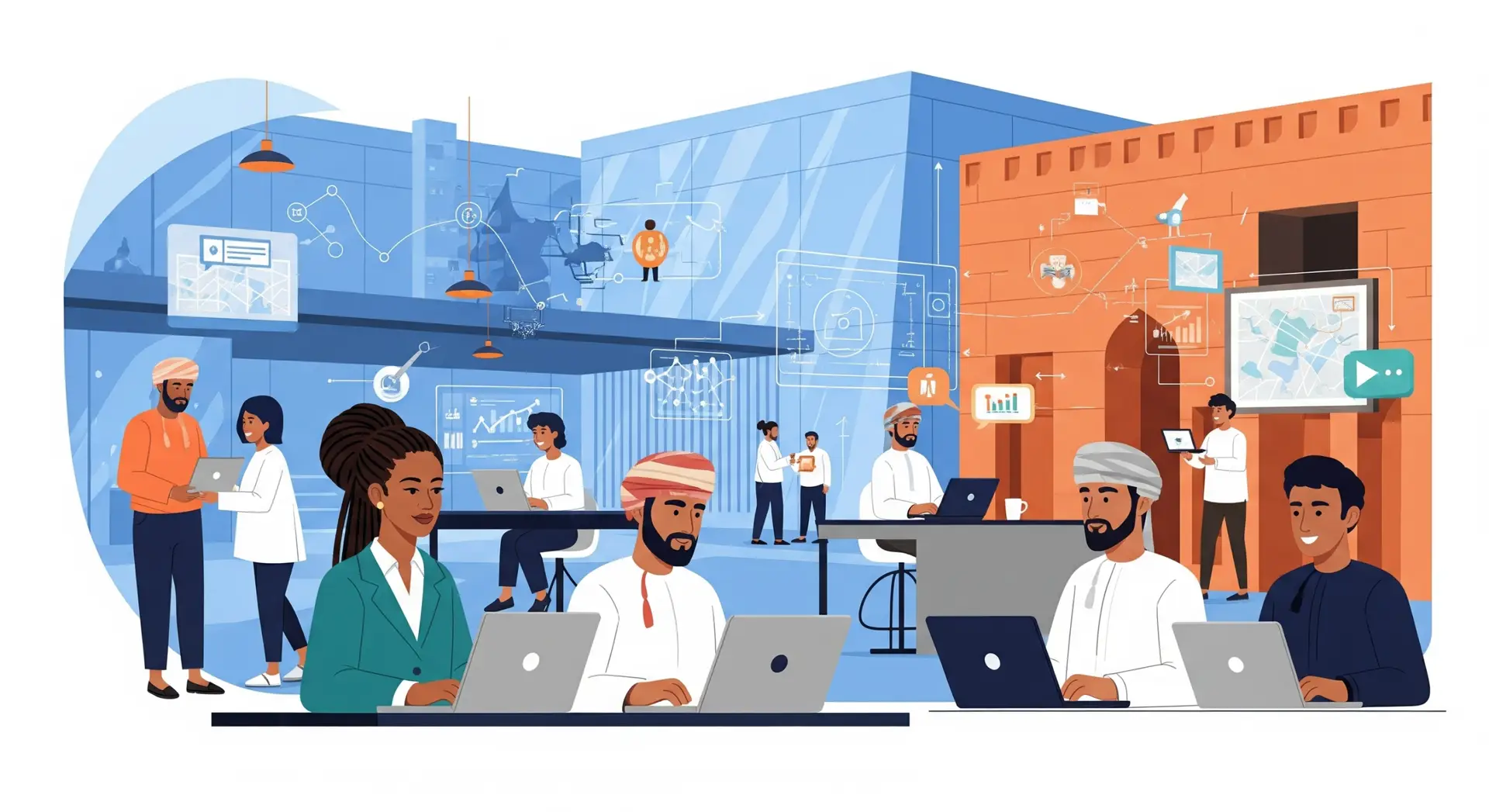Saudi Arabia’s Vision 2030 is more than a national development plan — it’s one of the most ambitious transformation agendas of the 21st century. Announced in 2016 by Crown Prince Mohammed bin Salman, this bold initiative aims to reduce the kingdom’s dependence on oil, diversify its economy, and transform its public sector into a model of efficiency and transparency. At the same time, it’s rapidly reshaping Saudi culture and society in a way not seen in decades.
🔑 The Three Pillars of Vision 2030
The strategy is anchored in three central pillars — not just strategic themes, but identity-defining principles for the Saudi future:
| Pillar | Objective |
|---|---|
| Vibrant Society | Preserve heritage, promote well-being, enrich lives through arts & sports |
| Thriving Economy | Increase private sector participation, attract FDI, create jobs |
| Ambitious Nation | Build a transparent, efficient government that leads by example |
This framework guides hundreds of projects, programs, and regulations across all sectors of Saudi life — from education and energy to tourism and technology.
🎯 Vision 2030 Goals by the Numbers
The plan sets ambitious, quantifiable targets. Here are some of the headline goals:
| Metric | 2016 Baseline | 2030 Target |
|---|---|---|
| Life Expectancy | 74 years | 80 years |
| Women in Workforce | ~19% | >30% |
| Private Sector Share of GDP | 40% | 65% |
| Non-Oil Exports (% of GDP) | ~16% | 50% |
| SME Contribution to GDP | 20% | 35% |
| Annual Umrah Visitors | 8 million | 30 million |
| PIF Assets Under Management | $159 billion | ~$1.8 trillion |
| FDI Contribution to GDP | 0.7% | 5.7% |
These are not abstract aspirations. Ministries and public investment bodies are given KPIs and timetables to track measurable progress.
🏗 Mega Projects: Reimagining Infrastructure and Identity
Vision 2030’s most visible symbols are its giga-projects, multi-billion-dollar developments aimed at positioning Saudi Arabia as a global destination for business, innovation, and tourism:
- NEOM – A $500 billion smart city with energy self-sufficiency, AI integration, and digital governance
- The Line – A futuristic, car-free urban corridor powered by renewables
- Qiddiya – A massive entertainment and sports complex outside Riyadh
- Red Sea Project – Sustainable luxury tourism with an environmental focus
- Diriyah Gate – A heritage and cultural site highlighting Saudi’s historical roots
These projects reflect the dual ambition of Vision 2030: to modernize without westernizing, and to innovate while preserving cultural identity.
📉 Not Without Challenges
Despite impressive momentum, Vision 2030 is not immune to setbacks. As of 2025, several high-profile projects have been scaled back. NEOM’s The Line, originally planned for 170 km of continuous urban development, has been reduced to a much shorter phase one due to construction and budget pressures.
FDI growth, while improving, is still behind target. The most recent figures show foreign direct investment in Q1 2025 at SAR 22.2 billion — a 44% increase year-over-year, but still well short of the $100 billion annual goal.
⚠️ Key concern: Balancing fiscal responsibility with visionary spending on untested projects.
Nonetheless, the government is adapting. The Public Investment Fund is increasingly focusing on local infrastructure, logistics, and industrial development — sectors with more immediate returns and job creation potential.
📲 Digital Government and E-Governance
Vision 2030 is also a digital transformation plan. Saudi Arabia has made major strides in digitizing government services, legal processes, and citizen engagement. Platforms like Absher, Tawakkalna, and Etimad have become integral to how Saudis access healthcare, traffic records, contracts, and even volunteer opportunities.
The shift toward AI-enabled governance, automation, and data-driven policy execution is not only about convenience. It’s part of a broader push to increase government accountability, reduce corruption, and operate with startup-like agility — a rare move in the public sector globally.
🧭 Why It Matters — Regionally and Globally
For Saudis, this vision is shaping new pathways for careers, entrepreneurship, education, and cultural expression. For the region, it signals a geopolitical shift — Saudi Arabia is positioning itself not just as a petrostate, but as a tech-powered, globally relevant player across energy, logistics, tourism, and manufacturing.
And for international businesses? Vision 2030 is a $1 trillion opportunity unfolding in real time.
✅ Final Takeaway
Vision 2030 is not just a reform plan. It’s a national reinvention project on a timeline. In less than a decade, Saudi Arabia has begun to transform its economy, society, and institutions from the ground up — pushing through deeply rooted traditions and economic habits. While execution risks remain, especially with mega-project feasibility and financial sustainability, the overall direction is clear.
For anyone in tech, automation, infrastructure, or regional business development, understanding Vision 2030 isn’t optional — it’s essential.






